A Plague Tale: Requiem Review (PS5) – The Light Fantastic
The eagerly awaited sequel to the award-winning first chapter Innocence, A Plague Tale: Requiem is upon us like a tsunami of biting vermin. Once again, it’s time to embark on a uniquely harrowing journey through plague-riddled 14th Century France, as Amicia and her brother Hugo continue to search for a place of safety from the Inquisition, the plague, the rats, and everyone out to get their hands on Hugo’s special blood affliction, the Macula.
Like the first game, it’s a world of plague, violence, evil and rats. A world of blood. There’s a visceral axe to the head in the first 15 minutes, and that is nothing -nothing- compared to the world of horrors to come over this second 20+ hour adventure. Be very aware this is not a game for kids, despite starring young characters.
But it’s also a world of surprising beauty. Just like its predecessor on PS4, Requiem must be one of, if not the prettiest game on PlayStation 5 right now – grand vistas, sprawling broken castles, majestic mountains, and lifelike swaying flora await you, each one hiding its own signature rot beneath. The world of Requiem is jaw-dropping whether you are wading through windswept flower gardens or knee-deep in rotting bodies.
But is it just more of the same, or can A Plague Tale: Requiem forge its own identity apart from its shorter younger brother? Can it build on or streamline its systems, its story, or its gameplay? Can it shake the naysayers and their dislike of Hugo or the whole game being one big escort mission? Let’s take a detailed look at A Plague Tale: Experience, sorry, Requiem.
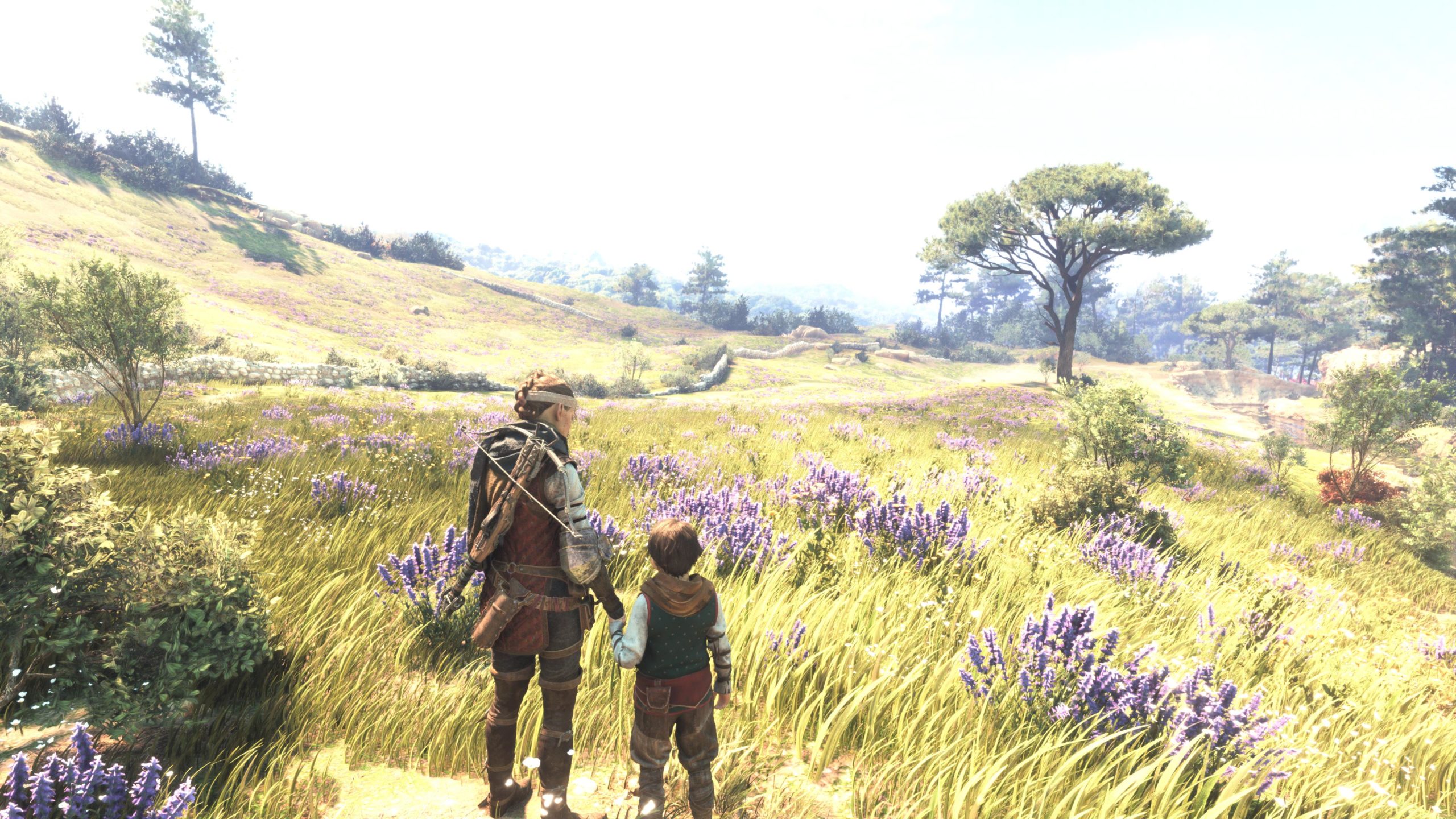
Following on from the events of Innocence, albeit with a short time lag, Requiem finds Amicia, Hugo, their mother Beatrice, and friend Lucas, arriving in Provence looking for sanctuary and help from ‘The Order’ with Hugo’s rat-attuned affliction, the Macula. Provence looks like a safe haven, bustling and beautiful. But all is not as it seems. For just a few streets away, vast districts of the city have been condemned, cordoned and barricaded while cityfolk die of the plague in their thousands. The fair is just the lucky few, unaware they’re surrounded by death. What seemed like safety is anything but.
And as the rats infest the city, so Hugo’s Macula blood threatens to kill him. Amicia must find help in a lawless rat-swarmed city, where mercenaries prowl and bodies lie rotting a dozen deep. Add to that A Plague Tale’s most memorable aspect, the rats. While impressive enough on PS4, the sequel on PS5 is a thing to behold, going from the PS4 max of 5000 rats on screen, to the jaw-dropping, toe-curling insanity levels of 300,000 rats on screen at once. In those numbers, they flow like tidal waves down the streets of the city, washing away everything, stripping flesh from bones and then eating the bones as well. Even in smaller enclosed puzzle areas, the rats swarm six or so deep, and easily overflow the PS4 maximums.
And while Provence and its story are strong, it can feel like A Plague Tale: Requiem takes a long time to get started – you go on perhaps three different fetch chapters with Lucas at the start. But what I’ve described above, the setup in Provence, is really just the first 4 chapters out of a hefty 16, and as you might imagine it’s very different after that. A more journey-like story emerges, more akin to the first game, and that is really where the game starts to become excellent. There is a particularly satisfying sequence where you meet the early big bad, kill dozens of soldiers, and make a fantastic decision, that really marks the transition to the new story.
There’s only so much I can say about the rest of the story without spoiling things. Amicia and Hugo strike out for a cure to the Macula, broadening Requiem’s world into southern France, the Mediterranean and beyond. In their investigations, they delve deep into the past, the origins of the Order and many other things besides. They make unlikely friends and pull them along. There are sections towards the middle of the game that match and far exceed the original’s memorable high points, and the mystery at Requiem’s heart is incredibly strong and had me gawking at the revelations.
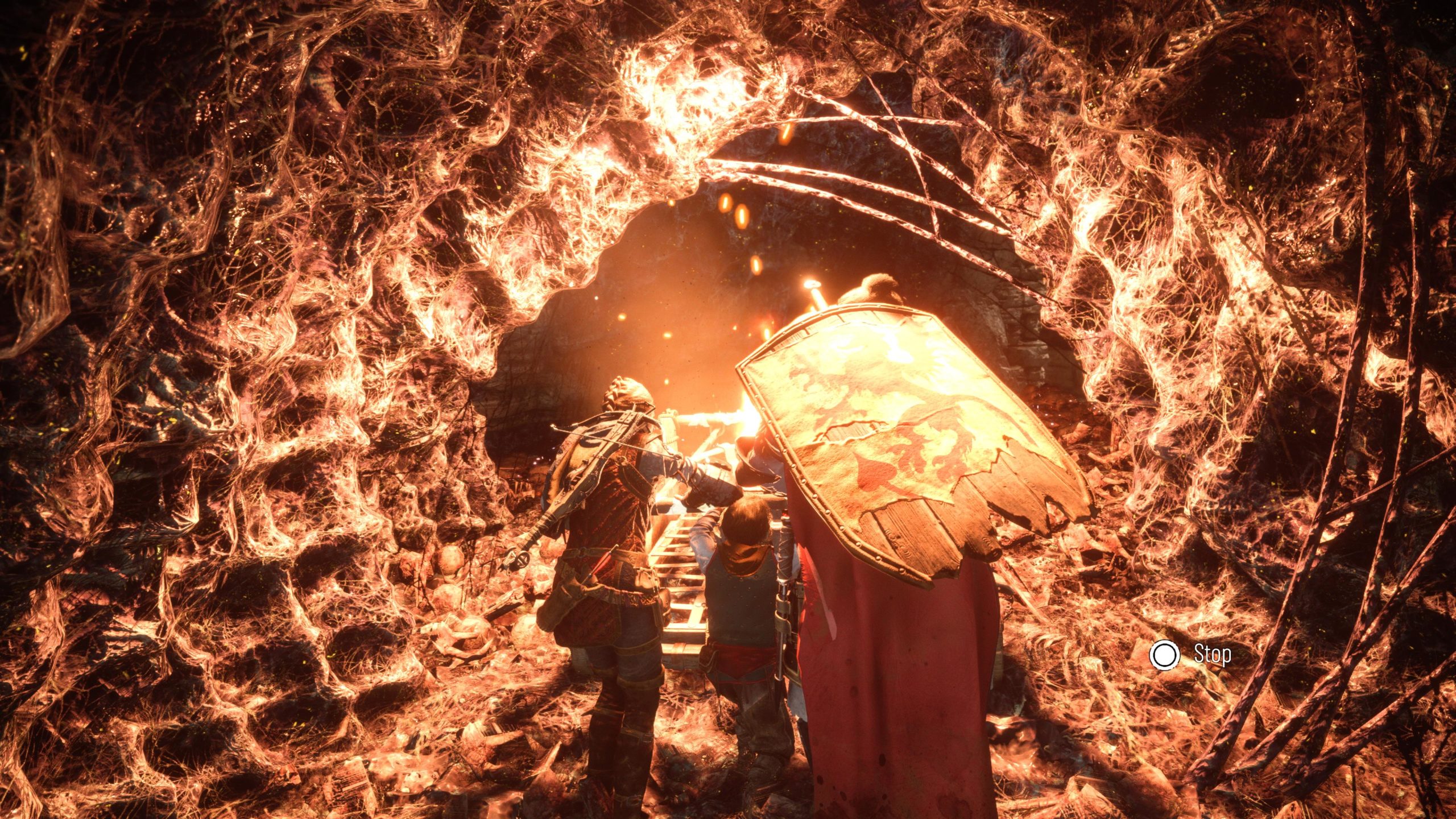
All the while Amicia and Hugo are on their own internal journeys of self-discovery. Amicia’s arsenal has increased (more on that in a moment) and with it her ability to kill, but this means her journey becomes a descent into darkness, killing and killing, and then beginning to enjoy it and not know where she lost herself. What happens after you learn to kill? What happens if you open yourself to violence? Hugo must get to grips with the heritage that comes with his tainted blood, and the clear consequences of his affliction and his sister’s actions. Why does everything beautiful inevitably turn to ash, death and rats? Because Asobo are cruel, Hugo, that’s why.
While it’s not a coming-of-age story like Innocence, or a kid’s against the world one, this one follows on in structure. This is the experience that follows the loss of Innocence. Amicia in particular is a whirlwind of anger, violence and impotent struggle that draws others along in her wake including her brother. Her and Hugo’s journey and her dogged determination to find anything that can help him, literally destroys cities and brings disease and death wherever they go. And yet, she cannot stop. If she stops, she has to face the idea she was wrong, or it was all for nothing. That she hurt the people she loved. That kind of violence needs a reason to feel justified. In this way, it’s got some serious parallels with The Last of Us Part 2 and Ellie’s descent into violence and revenge.
Requiem’s story is some of the greatest storytelling in video games right now. Clear and evocative narrative, a well-structured plot, and character arcs that rip emotional resonance from you as the player. It’s incredible stuff and reminded me again and again why I love video games. Make no mistake, A Plague Tale: Requiem is a masterclass in narrative games design, where everything is in service to telling you the best story possible. And while the beginning suffers slightly, I realised something. Requiem is around 6 hours longer than Innocence. It’s trying to tell a bigger story. Give it time to set up its scope. Everything has got bigger, not just the number of rats. The highs are higher, the lows are lower, and the rats tsunamis are just ridiculous.
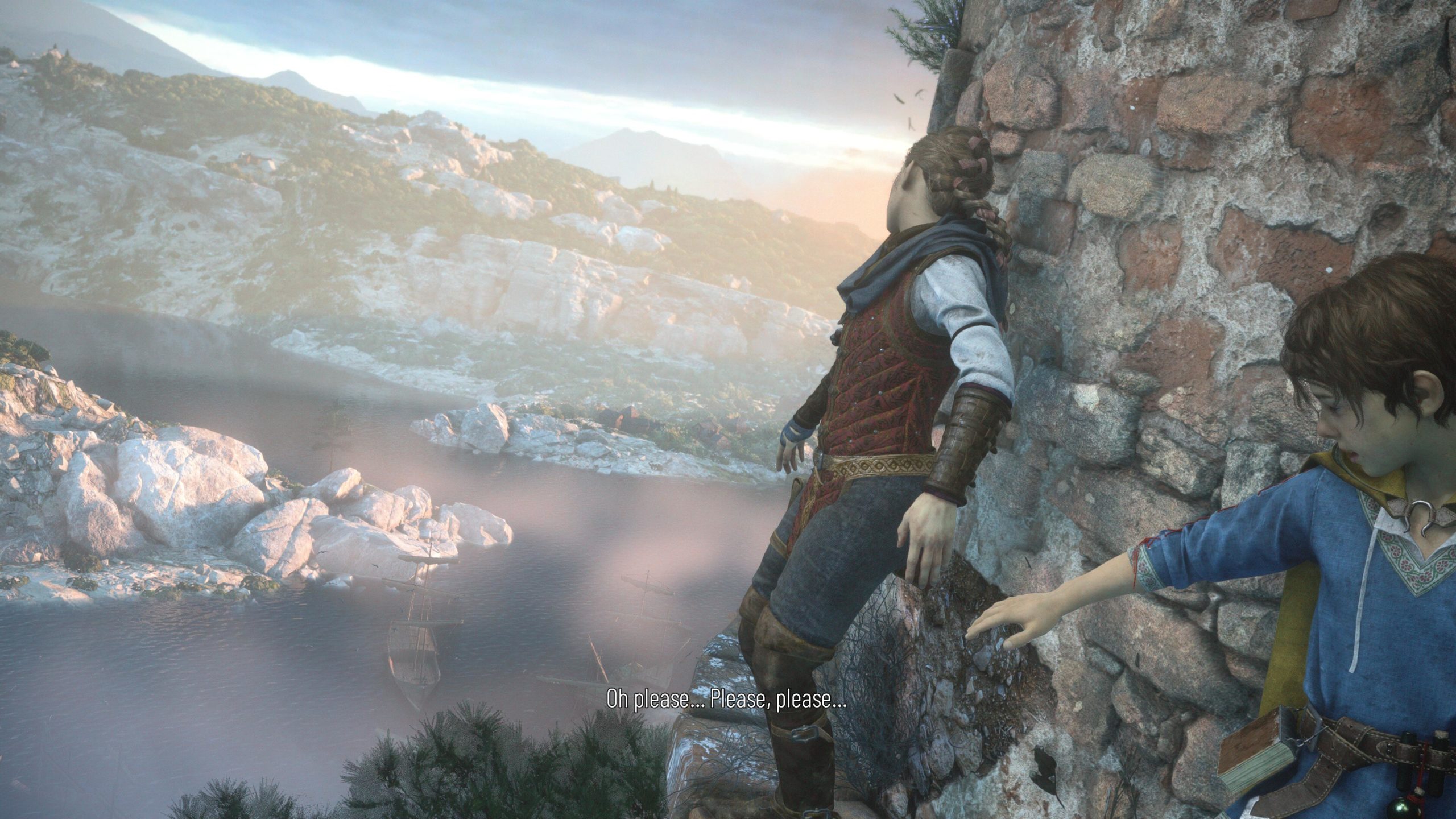
Asobo Studio should be commended for producing some of the most jaw-dropping vistas I’ve ever witnessed on any system. Not just the fidelity or the lifelike quality of everything, but down to things you don’t think about when playing – garden designers must have been consulted, horticulturalists, interior designers, historians by the truckload, architects, town and infrastructure specialists.
Provence in particular is a beautiful place to start, and seeing the same streets from one chapter to the next, go from glorious sunlight, to dappled twilight and then torrential rain, really shows off the systems that Asobo have built. The rain isn’t just there, it obeys the architecture. It cascades off the side of buildings, it hits runoffs and makes heavier waterfalls near arches. Provence is then left in the dirt when the second main location, which I won’t spoil, is revealed. There is an entire further level of beautiful that Requiem achieves that I didn’t even know was waiting above. It’s simply incredible.
And it isn’t just above ground in the green and gorgeous that Requiem stuns. This instalment features a lot of underground dark warrens with a touch of Giger, ruins that evoke the best of the early Assassin’s Creed games and Lara’s reboots. It’s in the incredible lighting, the realistic-looking rocks and wood, the way the light plays off them and creates something just a touch above – a heightened reality. The lighting engine in this game is phenomenal – A Plague Tale: Requiem should win awards for lighting alone. Apt in a game where the story relies so much on light. An example of where a concept, story and game mechanics marry up so perfectly you can’t imagine different.
Personal preferences – I had a much better time half an hour in, when I turned off motion blur so I could see this incredible world, and the same with chromatic aberration. The game does not need these effects over the top.
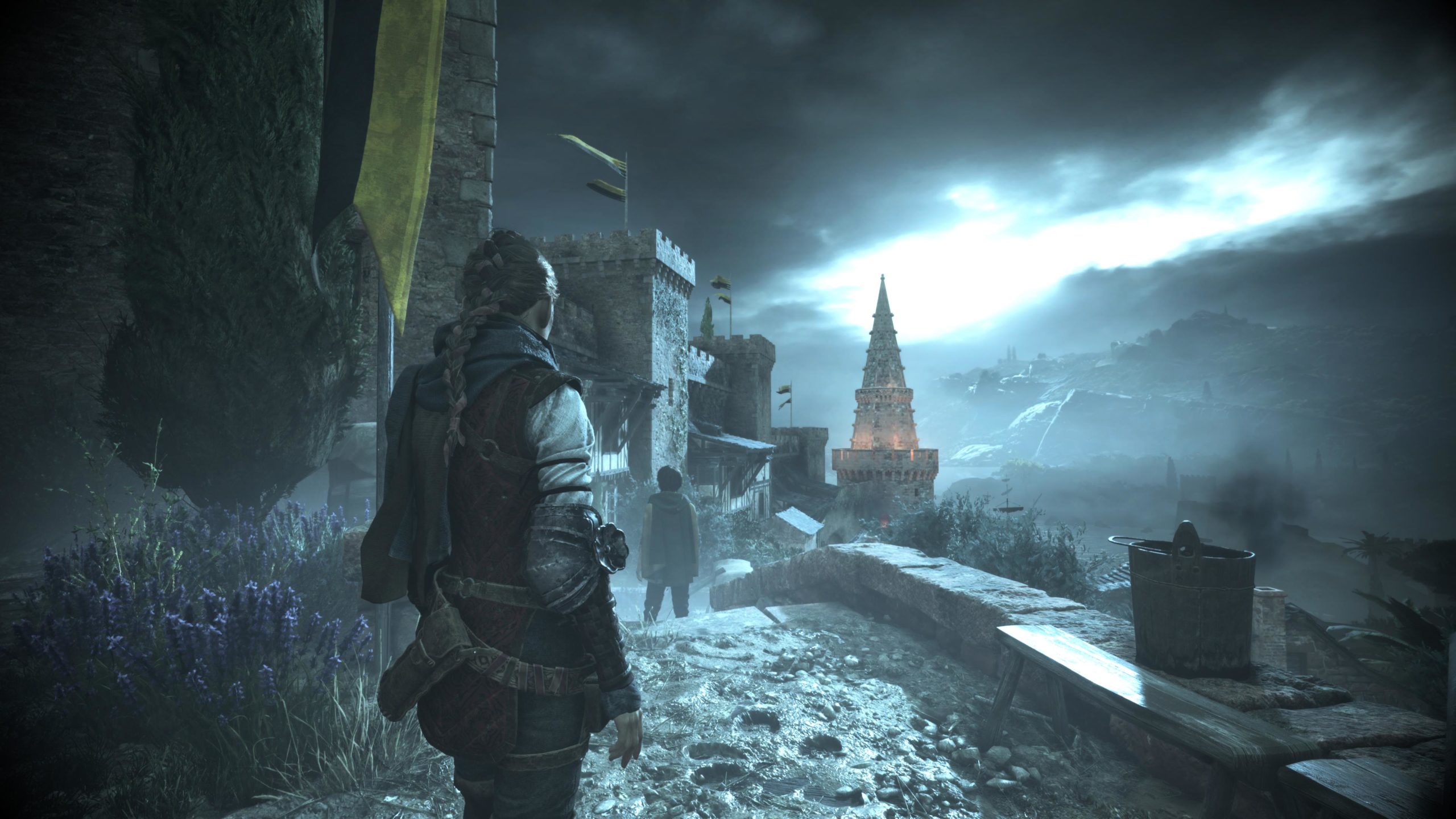
So, the core gameplay of Innocence has not changed, but many of the surrounding systems have. You’ll still spend a large portion of your time between traversal, combat and stealth modes. Walking, running, and running with Hugo are where you’ll hear a lot of the game’s incidental dialogue, and much of the important stuff too, especially when exploring the mystery areas akin to an Uncharted tomb. One niggle I had consistently was the game insisting on deciding whether you can walk or run, presumably for the gravitas of the moment and what’s happening in the story, but I just wanted to run so often it grated.
Combat and stealth really have to come together. For the most part, Requiem is designed to be tackled as a fully stealth experience and the only real times this isn’t the case are in scripted bosses, pivotal moments, or when your stealthiness has let you down. One thing that made the first game special was the stealth tools that are available to a young girl. Realistic handicaps that Amicia would encounter when faced with a full-grown adult knight for example. Its strength lay in Amicia using other methods – distraction, sling, pots and alchemy etc. While those are still intact, Requiem ups the ante with shiv kills, and a crossbow after a certain point in the story, to make Amicia pretty lethal. You have very limited ammo, so you’ll still need to play stealth, but the choice to go loud, or go lethal is welcome and it makes sense as an arc to her character – she’s not the inexperienced teen she was – she’s killed many times and she’s become skilled at it. As the narrative delves into, its also taken a hefty toll on her psychologically.
Requiem features far more open areas for stealth encounters, with almost always two or more ways to tackle your way through the area. These less scripted areas can be hard, with labyrinthine guard routes and the combination of guards, rats, and light and dark making for some really tough areas. It’s essentially one shot and you’re dead at the start of the game, until Amicia learns more ways to defend herself. But learn she does, as will the player as they hone their own abilities.
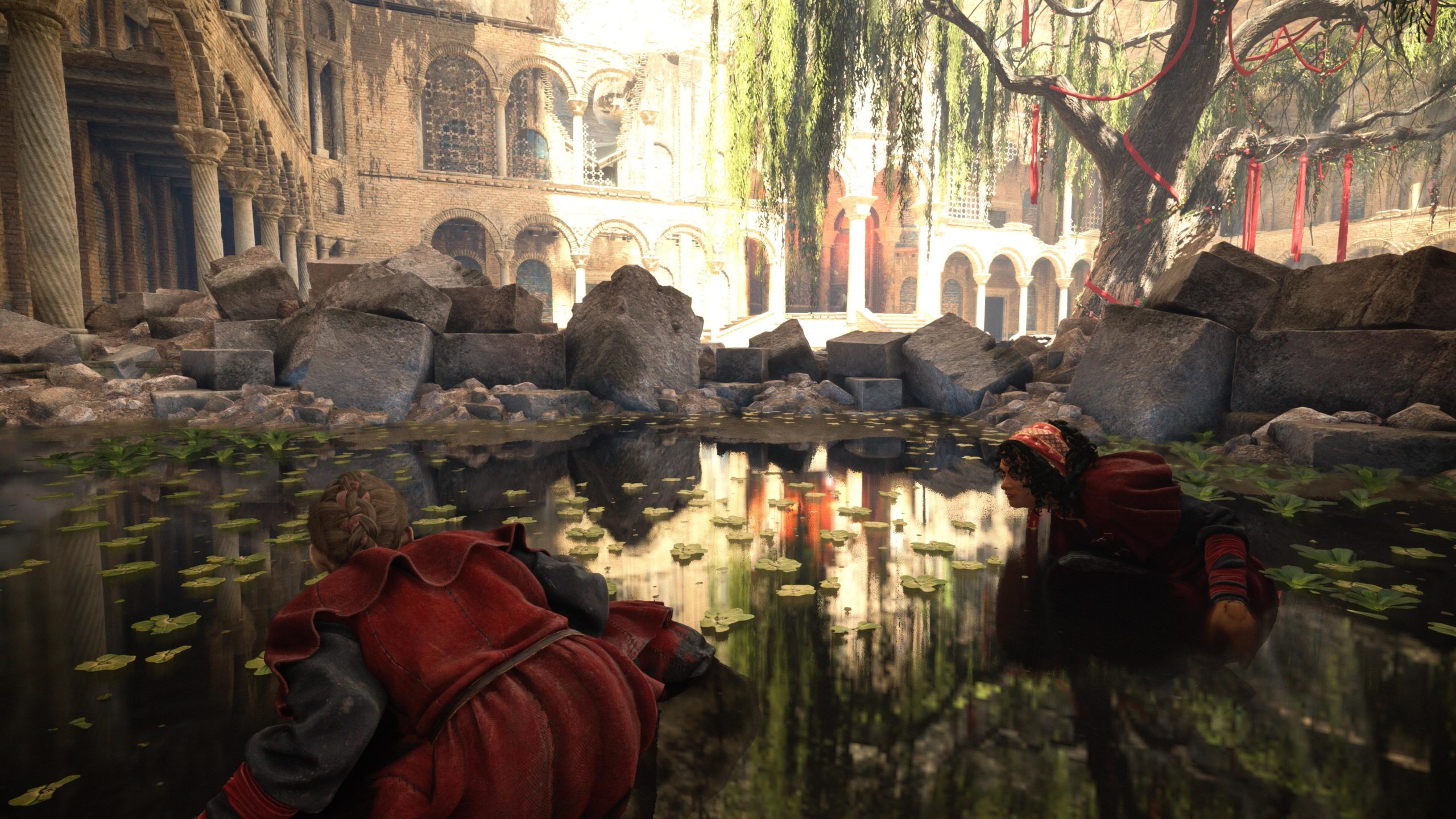
You have two systems: skills and upgrading. Upgrading is largely the same as in Innocence, finding tools and parts to craft upgrades to your sling, crossbow or inventory space. The only differences here are the actual upgrades and the menu UI.
The way you get skills though is new. Skills might be something like faster reloads or quicker walking, and they grow and unlock based on what skill types you prefer to use. Imagine instead of using skill points to upgrade only Aloy’s hunter skills, you just acquired the hunter skills because you achieved silent kills a lot. This is what Requiem does. Split into Prudence (Silent), Aggressive (Lethal) and Opportunism (Alchemy) Amicia’s skills increase as you use that type. So if you use your shivs and crossbows to kill, your Aggressive skills increase, giving you more chances to fight back, and more ways to do so if something goes wrong or loud.
In just the same way, achieve silent kills and your footsteps get quieter, your speed and throwing distance increase. Craft bombs and ammo, and the more you use, the better you get at using less resources, or doubling quantities. It’s a pretty slick system but it has its pros and cons. In one way it’s enhancing the things you use the most, deftly steering you towards a playstyle. On the other hand it’s taking choice of build away from you, forcing you down a pretty finite line of pre-determined upgrades.
There is a lack of customisation to Requiem, once again demonstrating it’s a game in service to its narrative, not the other way around. Personally, a Dark Souls-type build system or an RPG-like levelling system would gamify mechanics that are trying to be more intuitive. The whole game is like this. Chapters are beautifully designed around particular distant landmarks, but ones that you can always see on the skyline, or looming above. It acts as a constant reminder of where to go, but without quest markers, minimaps, or trails ever appearing. You can see from the screenshots, there’s no HUD at all unless you bring up the weapon choice wheel.
A Plague Tale: Requiem works constantly to remove systems that look gamified to enhance its visuals and envelope you in its world with no impediments. It streamlines its gameplay systems in service of story and ease-of-play, but possibly to its detriment in replay value and freedom of choice.
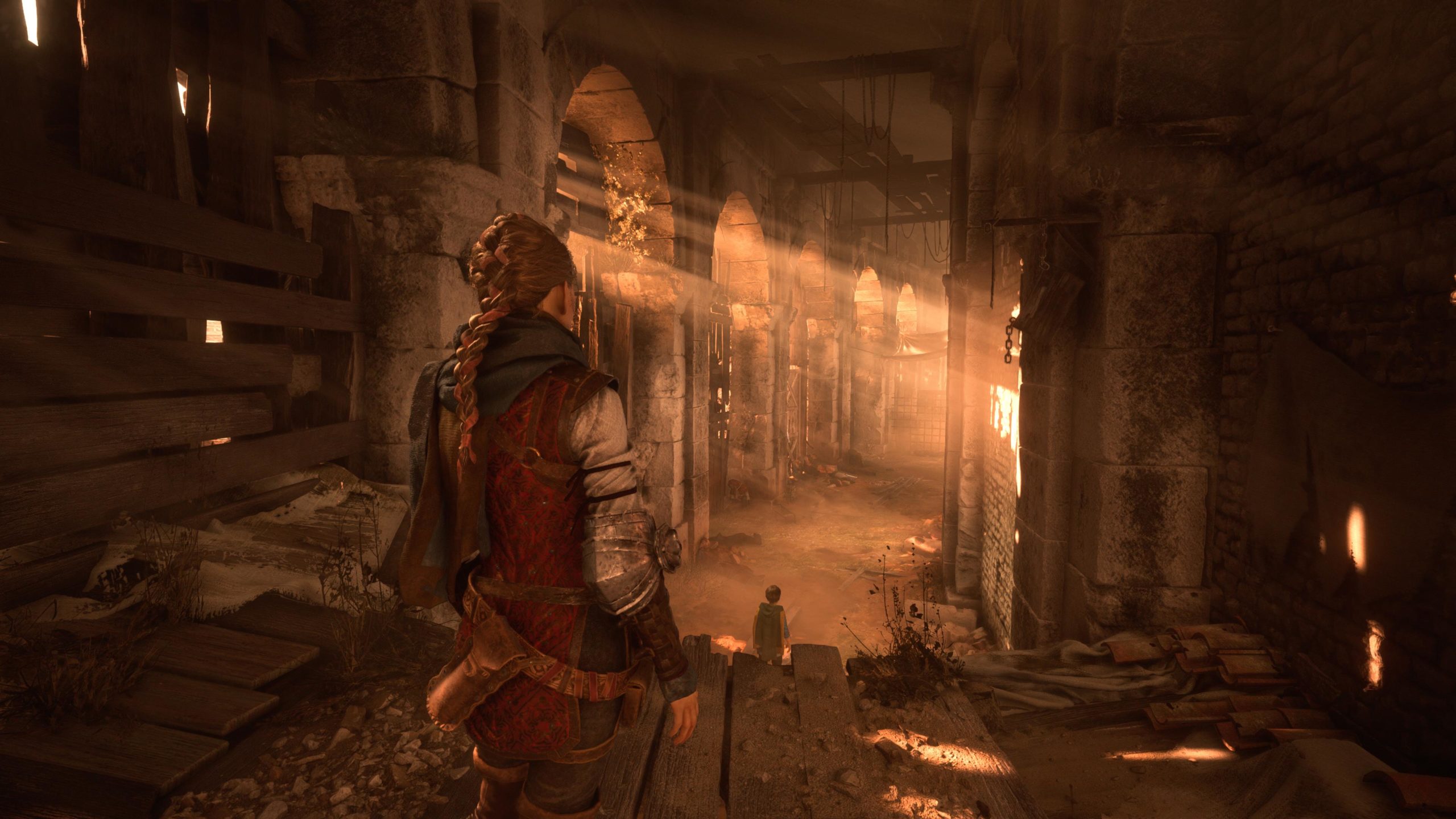
Also making a welcome return are the light and block puzzles from the first game. These don’t feel particularly different to me, and though there are many on par with the first game’s puzzle sections and that intricate castle area the kids had to traverse, I don’t think any outdo it either. This element is very much more of the same, but a welcome same.
Spoiler Alert, at the end of Innocence, Hugo was just coming to understand he could control the rats. In Requiem, one of the most fun new gameplay offerings is when you get the chance in a few areas to literally bring the rats forth from the ground and send them to devour your enemies. Hugo can bring them up in specific locations, and also possess a small horde and use them to clear the map.
Where Innocence felt to some like Escort Mission: The Game, Requiem manages to shrug off that feeling almost completely. Hugo becomes useful to you early on, with his own violent and awesome superpowers – missions where you get to use them are a little sparse, but they make you feel incredible. It’s now a case of a few escort chapters, peppering an otherwise varied selection of structures, either on your own as Amicia, with Hugo, or with one of the other companions and their own added gameplay elements – one has a light source of their own, and another can slice up your enemies on command.
As it is such a structured narrative game and requires collectibles for its trophies, Requiem also comes with an extensive and robust chapter select, cutting your required replay time down massively. Each chapter is further split into six or so individual sections, where you can then pinpoint that missed collectible.

The music of A Plague Tale: Requiem is an identifying feature all on its own. Lutes and violins cajoled into providing fast-paced action pieces, more pensive strings for the picturesque scenes and emotional moments. Nautical bagpipes and European guitars give identity and a sense of time and place, essential with its 14th century setting. There’s also a signature discordant ‘schree dum’ noise that is as identifiably Requiem as the booms in Inception, or the theme of a classic John Williams film score.
The cast are also once again fantastic, along with the 2-3 new faces and companions. The attention to detail on the voice work is top-notch including the different types of echoes and internal sounding vibrations when in a cave, deep underground, or in echoey stone ruins.
To me the motion capture, voice work and music were the final proof that Asobo and Focus have cracked something – A Plague Tale: Requiem feels like a Sony Exclusive – it’s crafted in the same way as The Last Of Us or Uncharted, or God of War, Ghost of Tsushima or Horizon without the open world. The fact that it isn’t and you can enjoy it on Xbox too is a boon to that system. Perhaps the Sony Exclusive style does not necessarily need Sony oversight and can be replicated?
In the interest of full disclosure, I did encounter a minor glitch or two. Companions, particularly Lucas, would get stuck in the scenery sometimes. This would be fine, but you need to escort him, or you need him to open a door with you or help you over a ledge. The game will get stuck in an unending loop waiting for the AI-controlled character to join you, and they can’t, because they’re stuck. This would be kind of fine if this were a co-op game, but it never is, and isn’t designed to be, so why wasn’t it just changed that they appear at the door with you, or even that you don’t need them to open the door in the first place. That’s a mechanic used by co-op games to corral the players back together in the same place ready to load and move into the next area together. It has little place here.
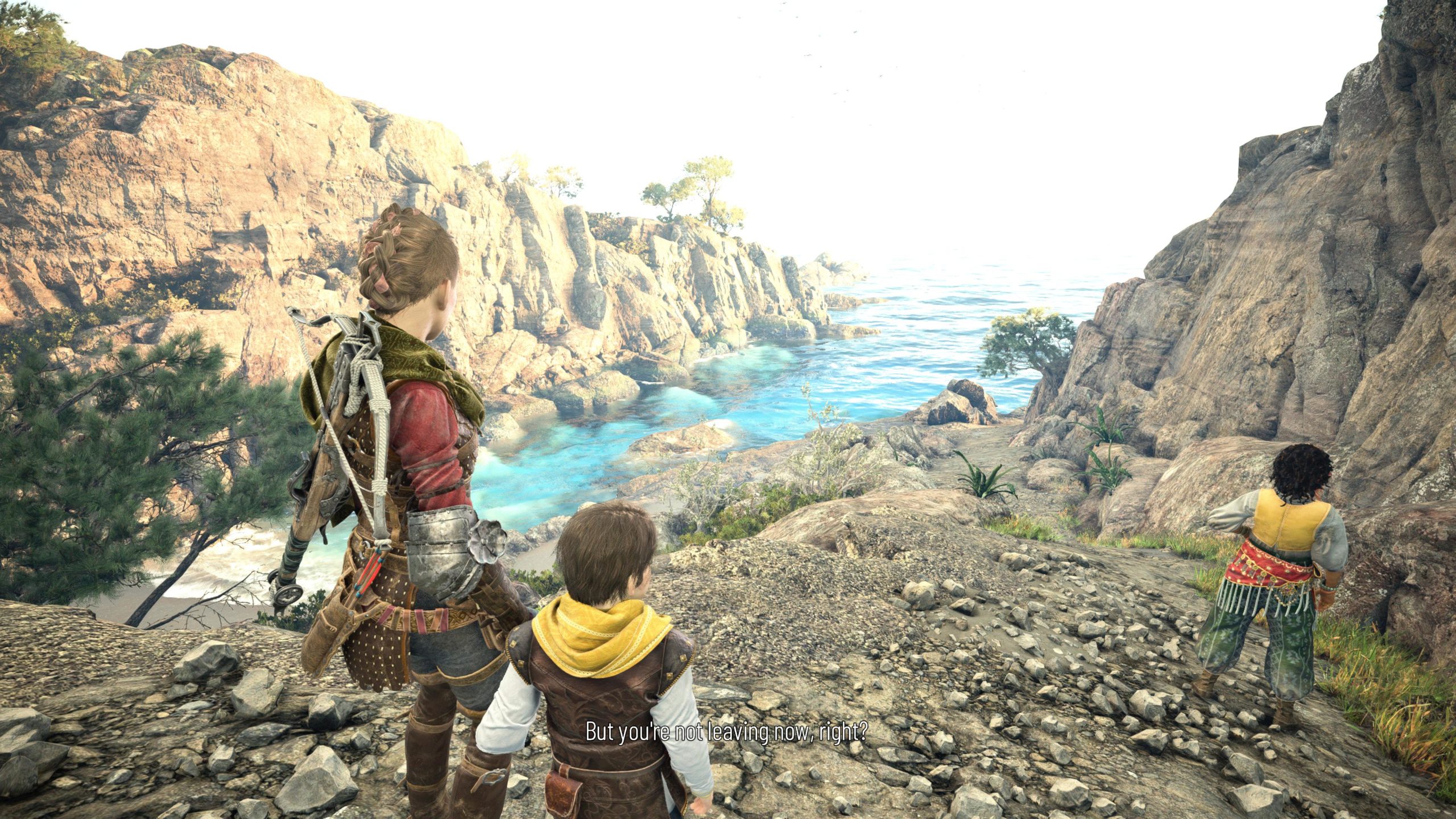
Perhaps it’s the inevitable bigger and better of video game sequels, that I worried we would lose that sense of wonder, of perfect self-contained storytelling, and gameplay that services narrative, from the first game. I needn’t have worried.
Requiem is a crowning achievement in Asobo Studios roster of games. They have improved on virtually every aspect of what was already a unique and award-winning proposition. Streamlined gameplay elements, bigger, bolder set-pieces, a wider scope of options in how you tackle stealth situations and multiple routes to your goal.
Somehow they’ve taken a relatively small-scale story and deepened and widened its scope, while at the same time not losing track of its very human central characters. A Plague Tale: Requiem takes cues from TLOU Part 2 and really delves into the descent into violence that’s possible if someone is driven by a strong enough goal and conviction. It puts you in that place where you play the character losing themselves in a storm of death and struggle and manages to never lose its hold on the rudder.
A Plague Tale: Requiem is a masterclass of narrative game design leading gameplay decisions and the creation of the game’s world. Everything here is in service to making an amazing story, and making the first experience of that story one to remember. The first time you wade through rotting flesh, the first time you see the rat tsunamis, the first time you realise just how deep and dark this story goes, these things will stay with me, and they are going to stay with every player.
A masterclass in narrative games design, A Plague Tale: Requiem is one of the most atmospheric and beautiful games you could ever wish to play. Amicia and Hugo’s journey is powerful, evocative and downright disturbing and somehow manages to be greater than the original. Asobo Studio has crafted satisfying streamlined rat, light and stealth gameplay that perfectly serves the story it’s trying to tell and only adds to the narrative intensity. A Game Of The Year contender for certain.

A Plague Tale: Requiem is available October 18th on PlayStation 5 (review platform), Xbox Series S/X and PC via Steam.
Developer: Asobo Studio
Publisher: Focus Entertainment
Disclaimer: In order to complete this review, we were provided with a promotional code from the publisher. For our full review policy, please go here.
If you enjoyed this article or any more of our content, please consider our Patreon.
Make sure to follow Finger Guns on our social channels. Twitter, Facebook, Twitch, Spotify or Apple Podcasts – to keep up to date on our news, reviews and features.
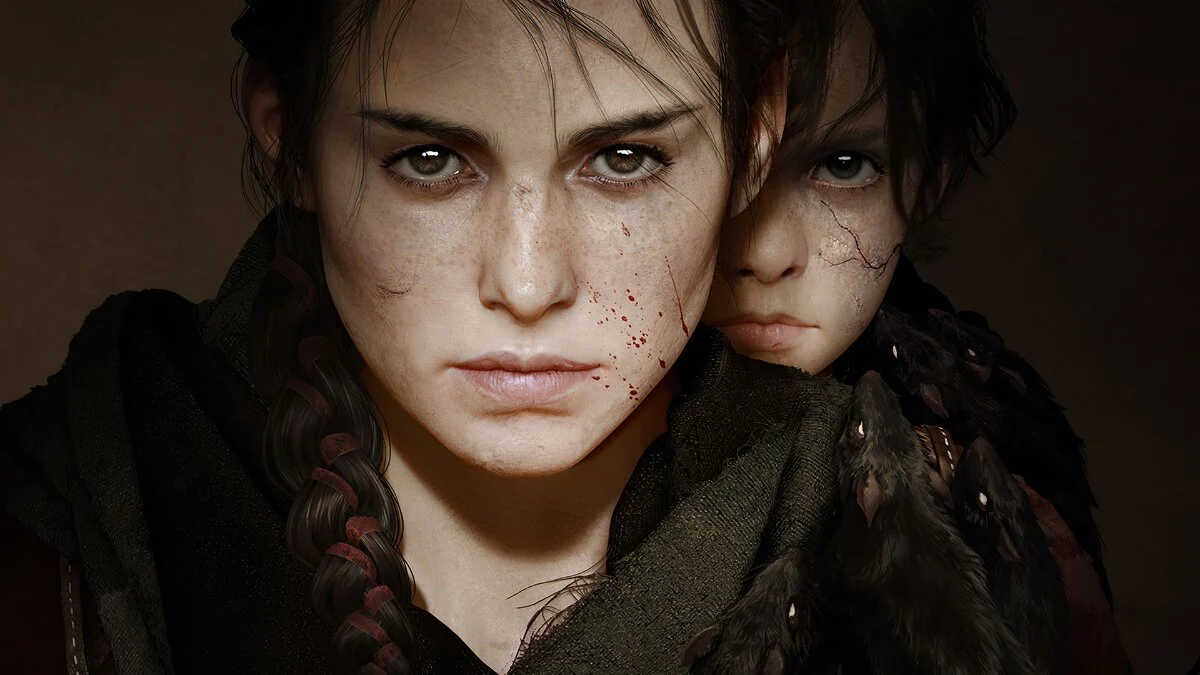

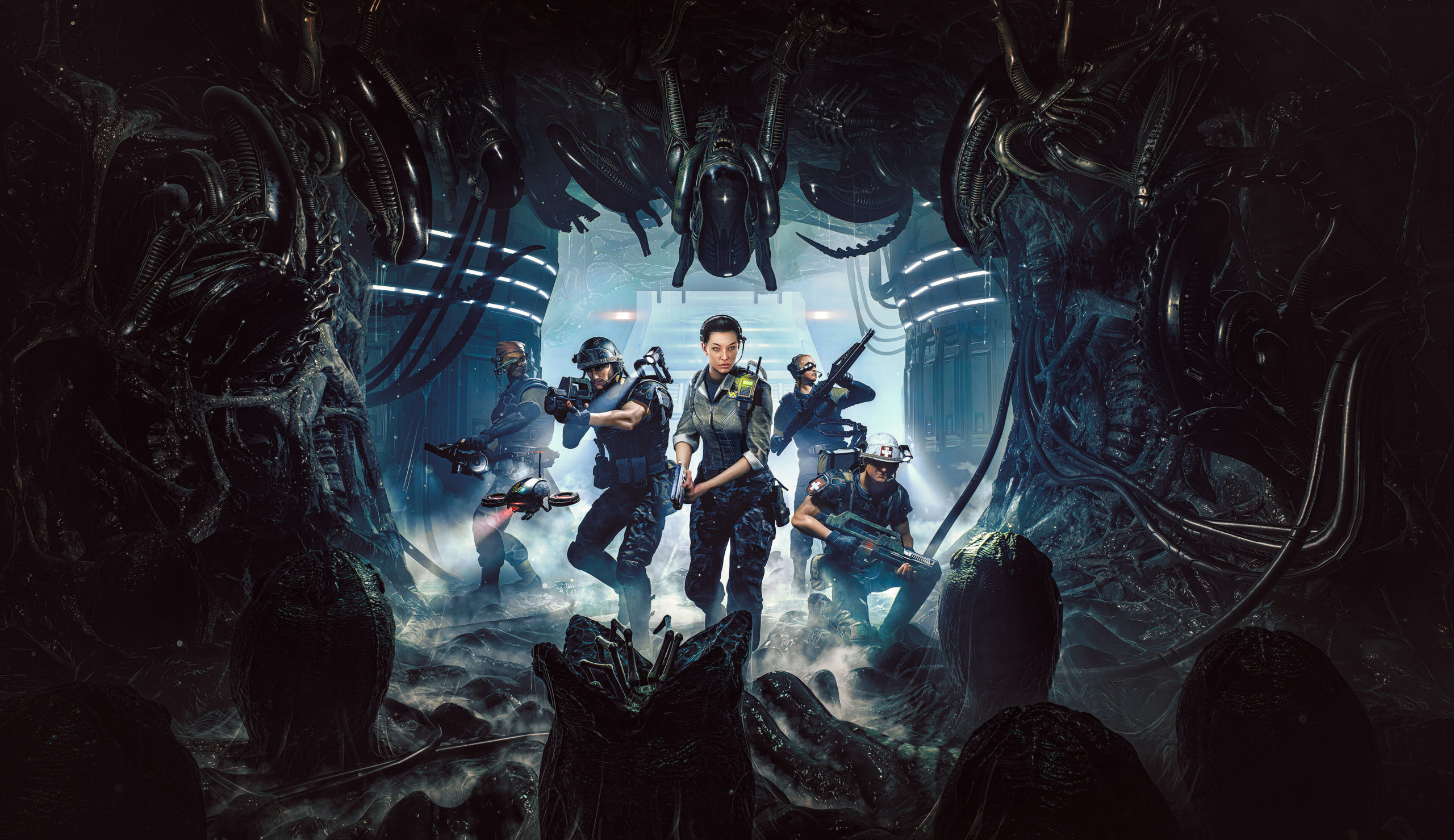

This game is just astonishing I love it